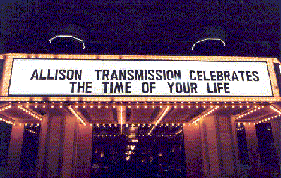Warranty Retirements:
What happens when a warranty expert finishes his career and takes decades of accumulated expertise with him?
The man who owned an advertising agency once joked that all his corporate assets took the elevator home each evening. For manufacturers who've been issuing warranties for decades, it's no joke to say that much of the accumulated knowledge that exists in their warranty department is inside the heads of people who have or will soon take their experience into retirement.
Nothing lasts forever, even warranty systems. When those warranty experts retire, the systems they leave behind may still be operational, but nobody may know how they work. While that may not be a problem, it could force a company into a kind of inertia where nothing can ever change because nobody knows how to change the software.
The whole year 2000 scare was beneficial in the sense that it forced a lot of companies to confront their orphaned legacy software code, written long ago by who knows who. But five or six years ago, what warranty software packages were for sale to replace all these accumulated legacy systems?
Replacing Experts with Expert Software

Nowadays there is more of a choice. When the warranty analysis expert at General Motors' Allison Transmission division decided to retire at the end of 2003, the company invited all of the top software vendors to bid their applications as his replacement. Eventually, the SAS Institute Inc. won out, because they could provide a package that was flexible enough to analyze warranty data in both the old way and some new ways.
Chuck Wodtke, Allison's current manager of warranty analysis, said the SAS Warranty Analysis system went into operation roughly seven months after his company's former warranty expert retired. "We had a person in the engineering department, the fact is, his entire 35-year career with Allison Transmission was dedicated to analyzing warranty data, and reporting it to engineering, service, and quality, so that we could validate that engineering was working on the right things," Wodtke said. In fact, when Wodtke first joined Allison back in 1973, his first assignment was to help warranty analysis expert Dave Ellis set up his files.
"My first assignment was in the service department, stuffing folders," Wodtke said. "Each folder represented a transmission, so I would stuff that folder with anything dealing with that transmission serial number. It could be a product registration. It could be a claim. It could be some kind of field report. Then Dave Ellis would take those very folders and perform his analysis."
Decades of Early Warning Reports
It may sound like a somewhat primitive system, but it worked. Wodtke would set up the records and Ellis would perform the analysis. Decades before the federal grovernment's TREAD Act would mandate the submission of Early Warning Reports that measured a company's divergence from a baseline of warranty claims rates, Wodtke and Ellis did in their heads what today is done by software.
"He virtually created our analytical world here," Wodtke said of Ellis. "He would use FORTRAN, Mark 4, PL/1 -- all of those ancient languages. He was a master in mathematics. And he would apply his trade to that data, and out would come reports that we would then use to drive our warranty analytics. It became clear with Dave nearing retirement that it would not be prudent, and would maybe be impossible, to train someone to understand all those ancient languages."

Even if it had been possible to train a new Dave Ellis to run the system for the next 35 years, that isn't what Allison wanted to do. While Ellis did a great job, everything had to go through him.
What Allison wanted as a replacement system was one that provided multiple people with access to warranty data. For while the old system worked well enough for Allison and its people, in 2003 there were also others from the General Motors Powertrain Division, into which Allison was then being folded, who needed to gain access to warranty data.
"If you have only one person with free access to the warranty data, you've created a natural pinch point," Wodtke said. "So what we were looking for was a piece of modern software -- living software -- that we could replace and update what Dave Ellis had been doing for us. We looked at various packages, SAS being one of those, and it was our conclusion that for the needs we were trying to achieve, SAS was the one package that gave us both the high-end analytical capabilities, as well as with their SAS Warranty application, a way to get to the underlying warranty data in a more user-friendly way, but still have the advantage of the underlying SAS tools."
Widening Access to Warranty Data
Wodtke said one advantage he found with SAS is how people familiar with advanced analytics could sit down and define a new technique for analyzing the data, which could then be used by others. "We could leverage that one analysis technique in other areas," he said. The other software packages could do many of the same analyses and generate many of the same reports, but they just couldn't export them as easily to other users or other uses. "They would say, 'to do that you're going to have to go to SAS.'"
Allison has been doing what's now called Early Warning Reporting for decades. "Many of the reports that Dave Ellis used to do for us were along those very lines," Wodtke said. "In the late 1970s and early 1980s, we had a very concerted effort here at Allison Transmission to prove the reliability of our heavy duty transmissions." To help that happen, Ellis was comparing one 12-month moving average to another. He was comparing one quarter's data against another. And he was spotlighting problems by setting statistical limits and then highlighting instances where those limits were exceeded.
Ironically, what Allison also wanted from its new SAS system was a way to create the same style of reports that Ellis used to generate. It turns out that Ellis had his fans within Allison. Some of those people have yet to make the adjustment to the new system. They used to depend on Ellis to provide them with their analyses. Now they can do it themselves, but do they really want to do that?
"We've been able to give more people access to the data, which is a good thing. But change comes slowly," Wodtke said. "So we need to convince people that it's OK to use the SAS Warranty Application tool. There are people who never had access to the data who are now using it quite freely. There are others who miss the personal service that someone like Dave could provide. Culturally, we're still going through that."
Warranty Chain Management Conference Approaches
Opening night for the Warranty Chain Management Conference in San Francisco is only a week away. More importantly, enough people have registered in advance for the event to make it likely that it will be completely sold out by next week. Your editor is already in town, drying out from the rains that seem to have saturated the state. But the good news is that the sun has returned, at least for the past few days.
The conference agenda is available on the Web page: www.warrantyconference.com/conference-program.html. Registration forms may be downloaded via the following link: www.warrantyconference.com/registration.html.
Discount conference rates are available for hotel rooms occupied between Feb. 27 and March 4, 2005, for a conference scheduled to take place on March 2 and 3 (with an evening reception on March 1). Registrants who need overnight accommodations are strongly urged to make their hotel reservations as soon as possible with the Hyatt at Fisherman�s Wharf, the conference venue, via the following link: fishermanswharf.hyatt.com/groupbooking/alga. Reservations are subject to availability and will be secured on a first-come, first-served basis.
Part One: During the kickoff keynotes by HP and IBM at last week's Warranty Chain Management conference, the need to involve people in warranty transformation projects outranked all technical and financial challenges.March 8, 2005









